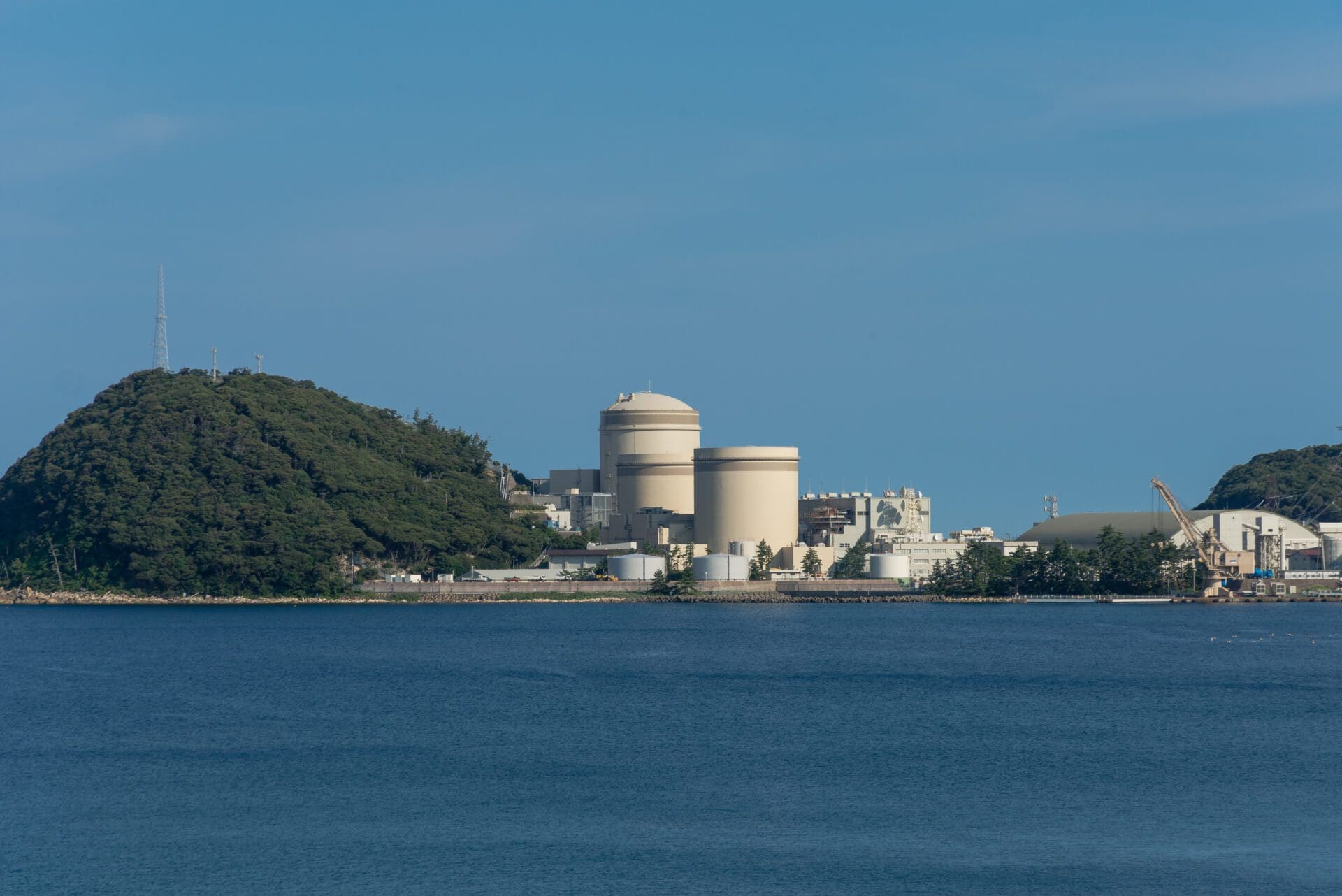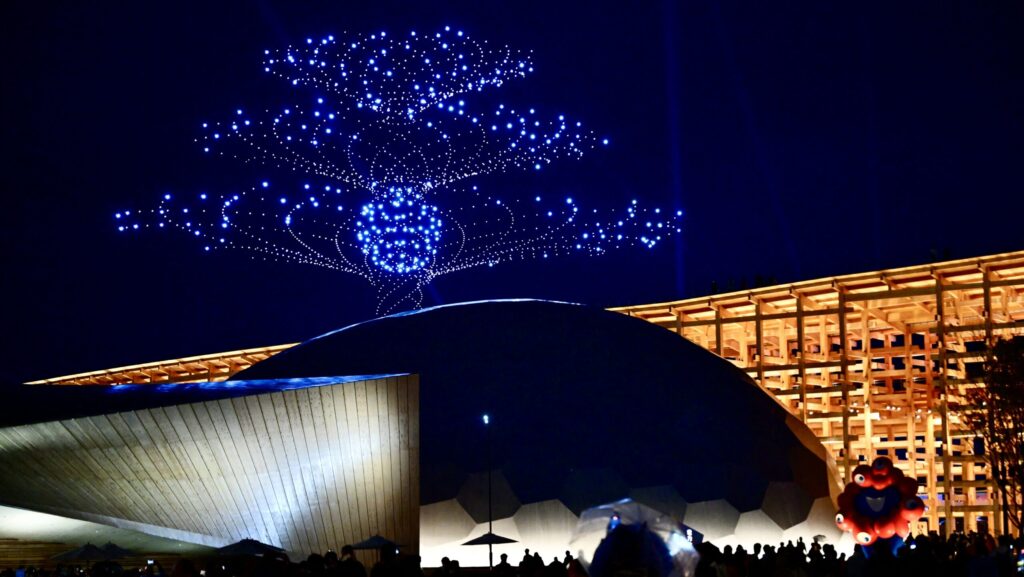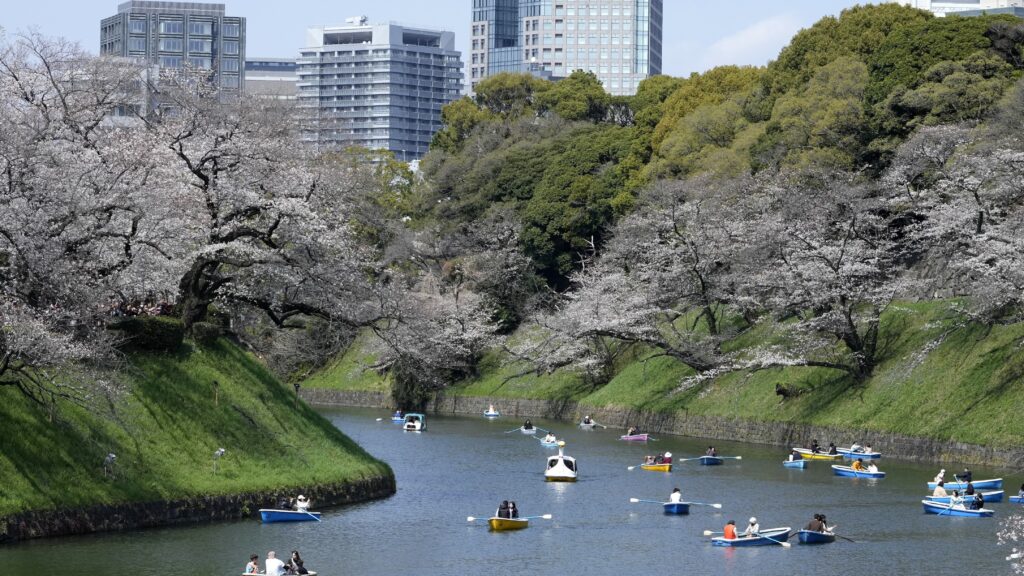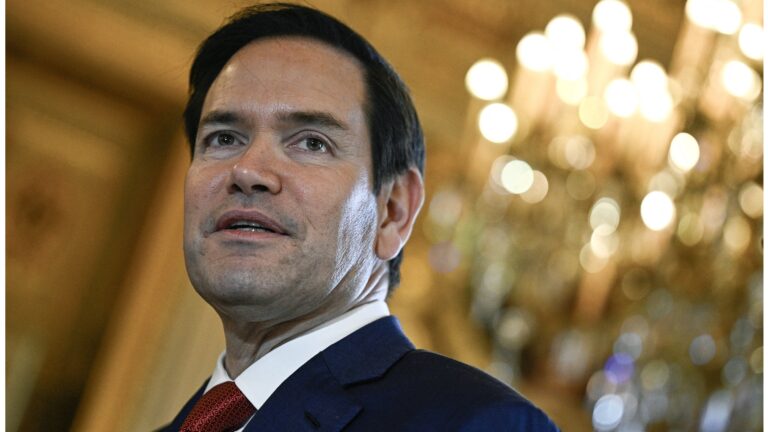A little over a decade ago Japan suffered one of the biggest nuclear accidents in the history of mankind, and the whole world learned the name of Fukushima, one of the forty-seven prefectures that hosts the ill-fated nuclear power plant. The accident was shocked not only Japan but the whole world, with unfavourable consequences to the reputation of nuclear energy. Phasing it out became a real option for Japan that has been heavily relying on nuclear in its energy mix for decades. However, in late August Japanese prime minister Kishida announced a plan to revive nuclear energy and called not only for the restart of existing reactors but also for the building of new ones. This change of heart may appear surprising at first but is in fact a reasonable move that has been in the making for a while.
Many certainly remember 11 March 2011, when a triple disaster struck Japan’s north-eastern region, Tohoku. The mega earthquake and the subsequent tsunami took more than twenty-two thousand lives[1]. The disaster caused irreparable damage to the reactors after the power plant was flooded. The reactor’s cooling systems were crippled, inducing a vicious cycle that would have led to a nuclear disaster of a much larger scale had it not been prevented by brave workers and the decisiveness of then prime minister Kan Naoto. (Those who are more interested in how the story unfolded in the crucial hours after the quake should watch the movie ‘Fukushima 50’.) Those who were in Japan at the time of the disaster, including the author, watched in awe and fear on live television as the reactors of the Fukushima Dai-ichi (which translates as ‘number one’, because there were two nuclear power plants in Fukushima hosting a total of ten reactors) blew up one by one. Thus Fukushima, one of the biggest and most beautiful prefectures in Japan, has become synonymous with danger and nuclear contamination as the prefecture hosting the ill-fated atomic power plant. Many countries and the EU have just recently started lifting the long unjustified embargo on products from Fukushima. (Hint: if you plan on going to Japan now that it has fully reopened after the Covid lockdowns, try discovering the hidden treasures of Fukushima! Except a few acres around the damaged plant, the place is perfectly safe to visit.)
The Fukushima accident shattered the illusion of the safety of atomic energy and had an impact on a global scale. The most notable example of its global impact is Germany: in response to the Fukushima disaster, then chancellor Merkel made the emotional decision to completely phase out nuclear energy in Germany, which delivered her a win in the following election. As the global energy crisis unfolds in 2022, the Germans now learn the hard way that it is not the wisest move to make energy policy decisions based on emotions or ideological beliefs. It is especially unwise for a conservative leader to pursue agendas embraced by the political left in energy policy decisions. Germany is now paying the price for that mistake.
‘Public confidence in safety of nuclear power was greatly shaken’ by the Fukushima disaster
After 11 March 2011, nuclear energy became a black sheep in Japan, too. As a Japanese cabinet white paper from the same year after the accident says, ‘public confidence in safety of nuclear power was greatly shaken’ by the Fukushima disaster. Although there were not many direct casualties connected to the accident (it was the tsunami that took most lives), there was an understandable overreaction in Japan, both in society and politics. It is very telling that two former prime ministers, the above-mentioned Kan Naoto, who was in power at the time of the tragic accident and the iconic leader in the 2000s pre-Abe era, Koizumi Junichiro both became loud anti-nuclear advocates. It was a reaction from a risk averse society. Before March 2011, there were a total of 60 nuclear reactors in Japan, including in Fukushima. After the accident every single one was stopped for a safety review. Safety standards were revisited and strengthened, and a new, independent supervisory agency was established. Twenty-four of the reactors, including the ten at the two Fukushima power plants got decommissioned, while the operation of most was suspended. By the time Kishida entered office, only nine out of those 60 were operational, with another 11 waiting for approval to restart.
A Short History of Nuclear Energy in Japan
Japanese society was slow to embrace nuclear energy, which was understandable as Japan is still the only country in human history to have suffered an atomic bomb attack—the sufferings caused by the two bombing of Hiroshima and Nagasaki are engraved in the collective psyche. Nuclear reactors started appearing in Japan in the 1970s, after the oil shock, with US help. Opting for nuclear was logical and at the same time a risky choice for Japan. Using nuclear energy as a baseload power may seem a logical choice at first glance in a country that is totally lacking fossil fuel resources, except for very limited coal reserves. (Let’s not forget that renewable energy was non-existent at the time.) On the other hand, Japan is the most earthquake-prone country in the world, with the whole country lying on a major tectonic fault line. Japan is a country where minor earthquakes are a natural part of everyday life, and major ones are also frequent in history. Definitely not an insurance policy for nuclear safety. Moreover, most of the land area is mountainous territory, thus all power plants are located by the sea. That proved to be fatal on 11 March 2011.
Post-Fukushima Nuclear Policy
After the Fukushima accident, phasing out nuclear became a very strong voice in the public discourse under the DPJ governments. The Democratic Party of Japan took power after a landslide election victory in August 2009, putting the discredited Liberal Democratic Party into opposition, which is a rare phenomenon in Japan—the conservative LDP has been in power for most of the time since its establishment in 1955. The DPJ, which was a colourful coalition of different left-leaning ideological streams and groups, was more receptive to a dramatic shift in energy policy and gave priority to renewables over nuclear energy, as opposed to the LDP that has decades of interlocking interests with the nuclear industry and the energy policy bureaucracy. Dramatic changes in energy policy may look good on paper and in theory, but the real problem with green ideas taking dominance in politics is that sooner or later reality raises its ugly head, just as it is happening now in Germany. Berlin is now reaping the fruits of decades of hostility towards nuclear and fossils, and suddenly cheap Russian gas is no longer available to balance the expensive Energiewende.
The DPJ years were short, marred by failures, crippled by lack of experience and the disharmony between politics and bureaucracy. The DPJ governments, consuming three prime ministers, lasted a little over three years. December 2012 saw the triumphant return of the LDP with the iconic prime minister Abe Shinzo.
Abe was an experienced politician and a conservative, which often translates as realist. He understood the challenges facing Japan, and in the Abe years the country tried to maintain a reasonable energy policy, but the issue of atomic energy still remained politically sensitive.
No Japanese government ever said no to renewable energy sources—the frequently revised strategic energy plans always include the increased role of green energy. On top of that, Suga Yoshihide, the prime minister succeeding Abe, set a very ambitious goal for his country to achieve net zero greenhouse gas emissions by 2050. A goal not only ambitious, but impossible, at least very difficult to reach according to experts.
Japan, as an economy powerhouse, has the fourth largest electricity demand in the world
If we look at the key features of Japan’s energy landscape it is easy to conclude that it would be difficult and unwise to say no to nuclear energy. Japan, as an economy powerhouse, has the fourth largest electricity demand in the world. With hardly any resources of its own, the country imports 76 per cent of its energy from overseas. Japan has a relatively small (about the size of the Kingdom of Hungary before World War I) and mountainous area, and a small and shallow sea area, with limited renewable energy potential. In addition, Japan is an island country, with no international transmission or transport infrastructure to directly import electricity or pipeline gas or oil. Japan also has a historically inherited structural challenge in its grid: the power grid runs on two different frequencies, which effectively cuts the country into two halves, each with a separate grid. The southwestern half of the country runs on 60Hz, while in Tokyo and to northeast of the capital the electricity is 50Hz. When the power grid was gradually built and developed in the Meiji era, foreign (American and German) companies brought their own technologies and frequency was not an issue at those times. Today, in the age of sophisticated electric devices, it causes challenges. For example, if someone is moving from Tokyo to Osaka, they need to buy a new TV set as the utility frequency is different in the two cities. On the macro scale, no matter how many reactors get restarted in the Kansai or Chubu area, it won’t solve electricity shortages in Tokyo or in the Tohoku region, where the disaster struck eleven years ago. Transforming electricity is expensive, thus transformation capacities are expected to be limited in the long term. Demand side solutions like saving electricity on a large scale could only work short term in an emergency situation and will and must remain in the realm of fantasy, because a growing economy and the acceleration of electrification, especially in mobility, will result in the continuous growth of electricity demand.
The Russia Factor
When it comes to energy policy, every country has a Russia factor. For Hungary, Russia means a historically inherited dependence on pipeline gas and oil, a transport infrastructure built in and inherited from Soviet times, and a geographical issue because of its closeness to Russia. Moreover, Hungary’s nuclear sector also developed in Soviet cooperation and the existing four reactors at the Paks nuclear power plant are all pressurised water reactors of Russian design.
Buying more Russian energy meant diversification and the increase of energy security for Japan
For Japan, Russia has been a tool of diversification, not dependence. Japan has been traditionally dependent on the Middle East in its import of fossil energy resources (crude oil and liquified natural gas.). Thus, buying more Russian energy meant diversification and the increase of energy security for Japan. It made sense: under the Abe years Japan sought cooperation with Russia, and even after the annexation of Crimea in 2014 Japan maintained a cooperative posture vis-à-vis Moscow. The untapped oil and gas reserves in the Russian Far East promised a good alternative to Japan. Japan, both the government and private sector companies, heavily invested in the Sakhalin projects. The island of Sakhalin, Karafuto in Japanese, is close to the mainland, and its southern half was Japanese territory between 1905 and 1945. From an energy security point of view, cheap oil and gas at a mere three-day shipping away, must be an obvious choice for Japan which imports more than 90 per cent of its oil from the Middle East. Japan owns a 30 per cent stake in the Sakhalin-1 project through the SODECO consortium, and a combined of 22.5 per cent stake in the Sakhalin-2 project, through Mitsui & Co. and Mitsubishi.
Consequences of the Russian Attack on Ukraine
24 February 2022 was a watershed moment in Japanese-Russian relations. Japan condemned the aggression, quickly joined sanctions in line with G7 partners, realised and openly admitted that talk about any peace treaty has no substance under the present circumstances, and the return of any of the islands of the Northern Territories is unrealistic. Russia formally withdrew from the peace treaty talks that were leading nowhere anyway. Unlike many Asian large or middle-sized powers that strictly prioritise their national interest, most notably China and India, Japan was quick and has been steadfast in adopting a position condemning Russian aggression and pledging support for Ukraine, including sanctions against Russian individuals and entities. Except for one area, which is energy. Similarly to the Hungarian government’s position, sanctions on the Russian energy sector have remained a red line for Tokyo. Even after the de facto nationalisation of the Sakhalin projects and the leaving of the major Western partners (Shell, Exxon), the Japanese investors maintained their stakes in the project consortiums.
One reason is obvious: the sanctions would hurt Japan more than Russia. If Japan decided not to buy the cheap and available Sakhalin gas and oil anymore, there would be countries happily filling that void. Take China, the world’s biggest buyer of LNG, with little or no sensitivity to the war in Ukraine.
The other reason goes back to the state of the nuclear sector. With most of reactors idled as an effect of 2011, many regional power utility companies rely on gas-fired power plants in electricity production. In the case of Hiroshima Gas, Russian LNG takes up half of its import, and the dependence in case of Kyushu Electric Power or Toho Gas is 20 per cent. In a demand driven global market it is not easy to replace a source, and the sudden disappearance of Russian LNG would cause power outages in many areas of Japan, which would seriously threaten the country’s energy security. Japan’s electricity market is already overstretched. A relatively big earthquake in March this year in the Tohoku area put power supply on tightrope in Tokyo and fifteen other prefectures, with rolling blackouts in the capital, a very rare phenomenon. Putting the nuclear plants back online would solve the problem.
The energy policy choices made in Tokyo have global ramifications
As an effect of the Russian aggression against Ukraine a global energy crisis has unfolded. Japan’s energy security problems are not only its own, and the energy policy choices made in Tokyo have global ramifications. By idling its massive nuclear fleet and the restarts proceeding at snail’s speed (it took nearly ten years for the Hokkaido Electric Power’s Tomari plant to be approved for operation), Japan is buying more LNG to maintain its electricity production. Just by restarting the existing and safe reactors would free up huge stocks of LNG, as much as 10bn cubic metres according to Fatih Birol, head of the International Energy Agency. That LNG would have a better use somewhere else, especially in Europe, a continent still dependent on Russian gas. It would ease the price pressure on gas and would help Europe get through the winter with Russian gas deliveries in doubt.
A New Phase in Japan’s Nuclear Policy
The announcement by Prime Minister Kishida on 24 August surprised many, but it was also a public admittance that the complicated equation of energy policy in a country lacking relevant resources aiming for energy security and net zero is impossible to solve without nuclear energy. It is easy to see the parallel with Hungary: with limited resources, limited renewable capacities and import dependence, there is no alternative to nuclear energy.
For years, nuclear energy has received the same treatment as nuclear weapons
Was it a brave political step or an act of crisis management by Kishida? Probably both, and hopefully it is an important step in the direction of energy realism. For years, nuclear energy has received the same treatment as nuclear weapons: green movements and climate fundamentalists have been trying to prevent its proliferation. Now Kishida announced the plan to have seventeen reactors back online by summer next year. He even flagged plans to build next generation nuclear reactors from 2030 onwards, and the potential extension of the operational lifespan of reactors from the typical 40 to 60 years.
The announcement by Kishida about the full rehabilitation of nuclear energy received limited reaction from both abroad and at home, contrary to Hungary’s plans to build two new reactors in Paks. One reason must be the excellent timing. As I stated above, amid a global energy crisis, priorities are bound to change. The other reason might be the fact that there is no Russian technology in the Japanese nuclear sector, and no plans to involve any, despite the fact that the relationship and cooperation between the nuclear sectors of the two countries have been traditionally good.
Japan’s nuclear turnaround shows that emotions, ideology and fantasies only work in energy policy as long as there is no crisis and there is abundant electricity. Facing potential power outages and cold winters forces everyone to reset the priorities. At the end of the day, energy security must come first, and climate radicalism leads to the same results as any other radical leftist ideology has before. Ending Japan’s ‘nuclear lost decade’, as Leo Lewis of the Financial Times described it, would not only help Japan, but Europe as well.
[1] 22,200 persons, including deaths and those who disappeared but never recovered. Source: NHK








